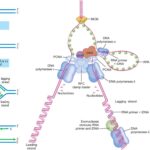IB Biology 11 Views 1 Answers
Sourav PanLv 9November 9, 2024
How does increased hydrostatic pressure cause the contents of the phloem to flow toward sinks?
How does increased hydrostatic pressure cause the contents of the phloem to flow toward sinks?
Please login to save the post
Please login to submit an answer.
Sourav PanLv 9May 15, 2025
Increased hydrostatic pressure in the phloem at the source leads to the flow of phloem sap toward sinks through a process known as the pressure-flow hypothesis. Here’s how this mechanism operates:
1. Active Transport at the Source
- At the source, typically in photosynthesizing leaves, sucrose and other organic compounds are actively transported into the phloem sieve tubes (sieve tube elements, STEs) from surrounding mesophyll cells. This active transport is facilitated by companion cells and requires energy in the form of ATP.
- The accumulation of solutes (mainly sucrose) in the sieve tubes increases their osmotic concentration, leading to a decrease in water potential (Ψs) within the phloem.
2. Water Uptake by Osmosis
- Due to the high concentration of solutes in the phloem, water from adjacent xylem vessels moves into the phloem by osmosis. This influx of water is driven by osmotic pressure differences, where water moves from areas of higher water potential (in xylem) to areas of lower water potential (in phloem).
3. Increased Hydrostatic Pressure
- As water enters the sieve tubes, it increases the volume of fluid within them, resulting in a rise in hydrostatic pressure (turgor pressure) at the source. This pressure is crucial for driving sap movement through the phloem.
- The high hydrostatic pressure generated at the source creates a pressure gradient between the source and sink regions.
4. Mass Flow Toward Sinks
- The phloem sap, now under high hydrostatic pressure, moves toward areas of lower pressure (the sinks). This movement occurs through bulk flow, where the sap flows from regions of high pressure to regions of low pressure within the sieve tubes.
- At sinks, such as growing roots or developing fruits, sucrose is actively transported out of the phloem into surrounding cells. This removal of solute decreases the osmotic concentration in the phloem sap at these locations.
5. Pressure Decrease at Sinks
- As sucrose is unloaded from the phloem at sinks, water follows by osmosis out of the phloem and into surrounding tissues where solute concentrations may be higher. This loss of water reduces hydrostatic pressure within the sieve tubes at sinks.
- The combination of solute removal and water loss creates a continuous cycle where high-pressure areas push sap toward low-pressure areas, maintaining flow throughout the plant.
0
0 likes
- Share on Facebook
- Share on Twitter
- Share on LinkedIn
0 found this helpful out of 0 votes
Helpful: 0%
Helpful: 0%
Was this page helpful?




